Mary Snyder is a NYC based mixed media artist, currently making zines out of her studio in Brooklyn, NY. She has been making collages and taking photographs since she was in high school but took a break from art to pursue a degree in sociology. After graduating in 2013, she made the move to NYC from San Francisco, CA to pursue art again. Since moving to New York she has shown in gallery shows in Manhattan and Brooklyn. In addition, she has also curated two group shows, both located at C’mon Everybody in Brooklyn. She mixes text, both found and original, with found images and personal photographs to create 14+ page zines. She has just finished Out East a zine about her move from the west to east coast and is currently working on a photography book of original prints and collages.

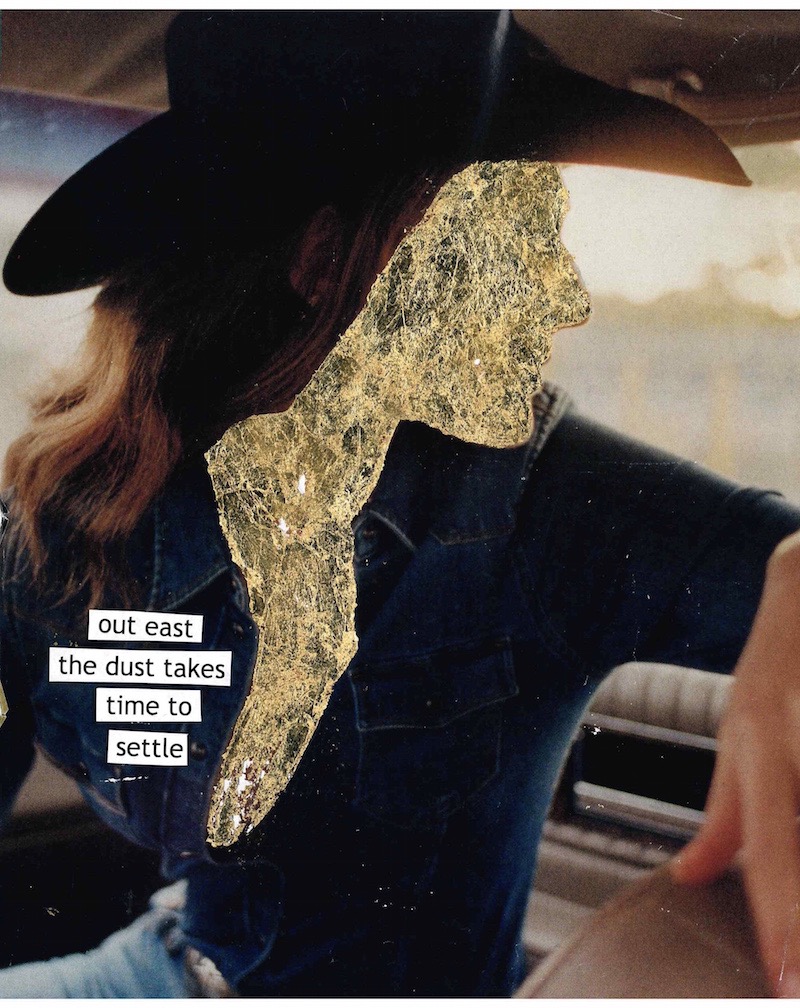

Out East
Out East is a collection of individual pieces coming together to tell a coming of age narrative about my move from California to New York City. Moving to a new city is stressful and anxiety ridden for anyone and for the first few years of living here I was Last year though, there was a shift when I made my first zine and found that I wanted to not only make aesthetically emotional pieces but tell a story as well. My first zine ‘Summer Blues’ was about the last days of summer and the melancholy that can seep in. This zine, Out East, is more personal and my first attempt at sharing both my insecurities and my triumphs. I want people to see my work and feel empowered to tell their own stories. Vulnerability and belief in oneself is a road to freedom.
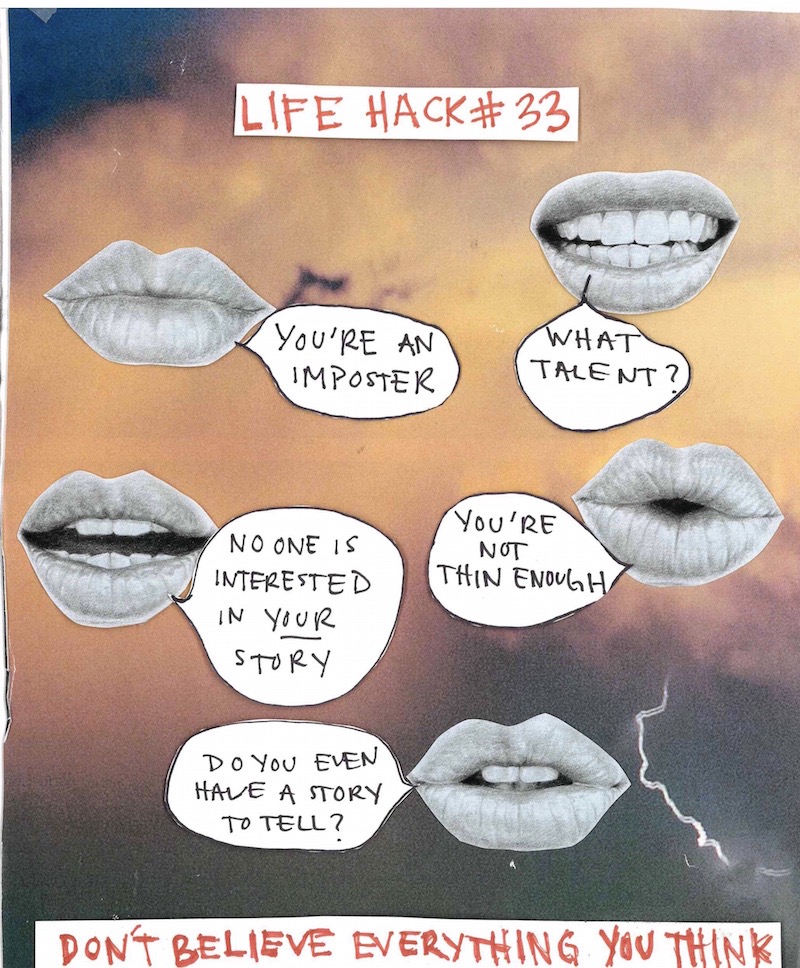
Julia Wilson: To begin, can you tell us a little about your day to day as an artist and curator, and how you view your role as an artist in relationship to your curation? Conceptually and aesthetically, how do theories on your own art making influence the types of shows you curate, or the types of work you are drawn to? Is it hard to separate the two, or do you believe they’re inextricable?
Mary Snyder: I work in a restaurant so my art schedule is based on my schedule at the restaurant. It changes weekly so I just go to my studio in Bushwick, BK on my days off and before work. My creativity comes in bursts. I’m either really creative, working on a single project or I’m not really working on art. I’ve gotten more consistent since I started making zines and since I found studio space. Having a studio has been such a game changer. I have a dedicated work space that I can I spread out in and leave projects out and not have to worry about putting everything away. I haven’t curated a show in a long time actually. It’s something I loved doing but have put on the back burner. I want to come back to it though, putting on one night shows where everything is moderately priced and artists can likely sell, is something I’ve been thinking about for awhile. I’ve been creative my whole life and have always loved collage the most. I went to an arts high school but studied sociology in college. It was only after graduating that I realized I missed making things and wanted to move to New York and become an artist. It’s been 5 years and I still have so much to learn and accomplish.
Curating and making art are inextricable for me. My goal is always to make you and myself feel something always, whether I’m making a piece or thinking of a theme for a show. I like art and themes that provoke feelings of nostalgia, beauty and sometimes heartbreak. I like emotion in general. My process also benefits from curating art shows because I like a theme. I like having parameters and a general direction or story I’m telling. It helps my creativity to have boundaries. I like having a variety of mediums at every show. Ultimately I want to make people feel something from my work and the group shows I do. I started doing it as a way to show my own work but discovered I really love bringing others work to light as well.
JW: I totally know understand what you mean about periods of stagnation and periods of high creativity. It makes me think the Greeks were onto something with the idea of the uncontrollable muse, who sang in someone rather than to someone. And working our day jobs definitely doesn’t always lend itself to art-making and sometimes it seems as if the muse, if not dormant, has just died altogether. Having just graduated with an MFA in photography, and after 3 years of solely dedicating myself to my art and constant reading and research, it’s been hard to come out of my post-graduate real-life pay-the-bills disposition. And a lot of my friends have shared similar sentiments, so I just want to relay that I AM WITH YOU. So, before this begins to sound like a session with my therapist, I wanted to delve a little into what you mean when you say, you want people to feel something when they go to your shows, or view your work. Because that’s something I say a lot. I give contemporary art a lot of shit. I also give a lot of art in general a lot shit (maybe undeservedly, or unwarranted) because (after the post modernists) it seems that it has become utterly “uncool” to be ernest or genuine, or vulnerable with one’s work – or to be truly authentic to who you are, as an individual, outside of the political media-driven hogwash we’re force-fed on an unending basis – or like you said, to make someone feel something in unison with, but also very distinct from yourself. Once again, I’ve trailed off, but I’d like to know where you create or find meaning in your work, and how do you try to go about making someone feel something. Especially someone who works with text and image, how do you use these overused tools of communication to make something meaningful?
MS: I think at the core of everything I do is the need and want to connect with other people. I think most of us are looking for that human connection. And the easiest way to do that, for me, from my experience, is to make art that is very much about my story and what I’m feeling. All in the hope that people looking at my work can see themselves reflected back. That’s the kind of art I’m most affected by. The stuff that pulls at your heart strings and makes you see the beauty in the world or the hurt that someone is feeling. I want to be moved and in turn move people with what I make. Vulnerability breeds more authenticity and I think that’s an important point of view that unfortunately doesn’t always carry the same weight as a highly politicized point view does. It’s something I try not to think about because that’s just not who I am and I ultimately make art for me, not the art world.
In terms of my aesthetic, I have always been heavily influenced by art and fashion magazines, which is where my love for text and image comes from. They two marry so well together and can tell an entire story using a few words and a powerful image. So what if it’s overused, it’s what feels the most natural to me. I’m trying to just be myself so that other people have permission to do the same. We’re raised with so much shame and fear surrounding self expression, I want to challenge that and be as vulnerable as I can (definitely a work in progress on this). This is also my aim as a curator. I want to bring people together using art and emotion as the links. There’s so much strength in tenderness and I want to highlight that.
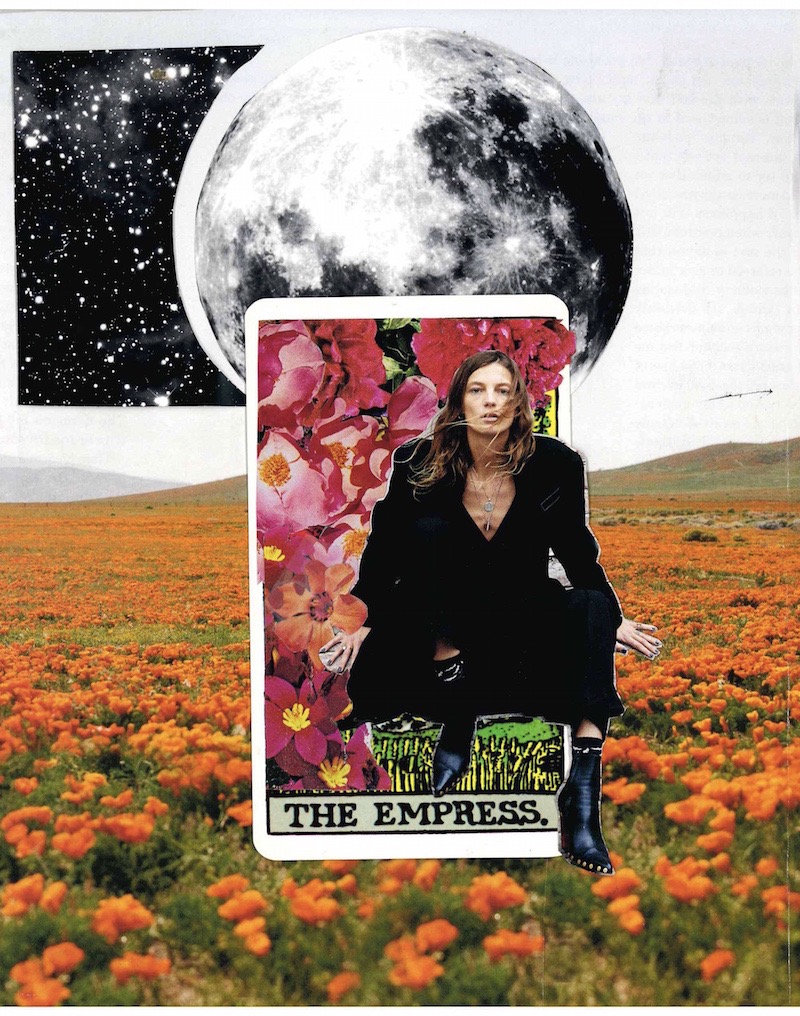
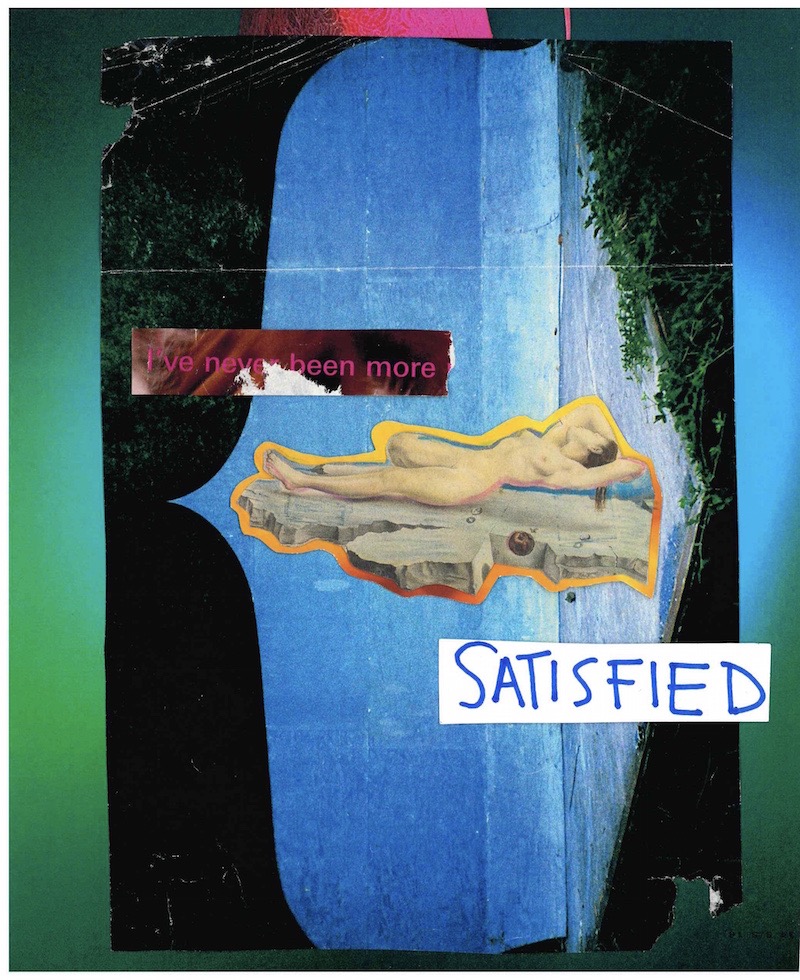
JW: To reassert the overused but (in my opinion) absolutely accurate statement statement, the personal is political, or specificity is universality. In such a politically driven climate, the pressure to make work about society and politics surrounds us constantly, but didactic or ideological driven work, only supports polarization and either affirms or alienates pre-existing mentalities, leaving no room for unity. To quote Camus in his essay, Create Dangerously, “Art Confounds All Judges” and that Art unites, while tyranny separates. Has there been a moment in your artistic career where you experienced or saw the effect your work had on a viewer: where something happened beyond any intention you had during the work’s creation? Can you describe the piece, and the moment, or the significance its had on your general artistic philosophy?
MS: The first piece that comes to mind is ‘The Fool’, which I made for the Collective Unconscious show I curated. The inspiration and the title comes from the archetype of The Fool from the tarot. If you’re unfamiliar with the tarot, it’s made up of 78 cards, 22 major arcana and 56 minor arcana. The Fool is card 0 of the majors and represents new beginnings, new adventures, taking the leap. It’s the beginning of the hero’s journey. Here’s a picture of the piece:
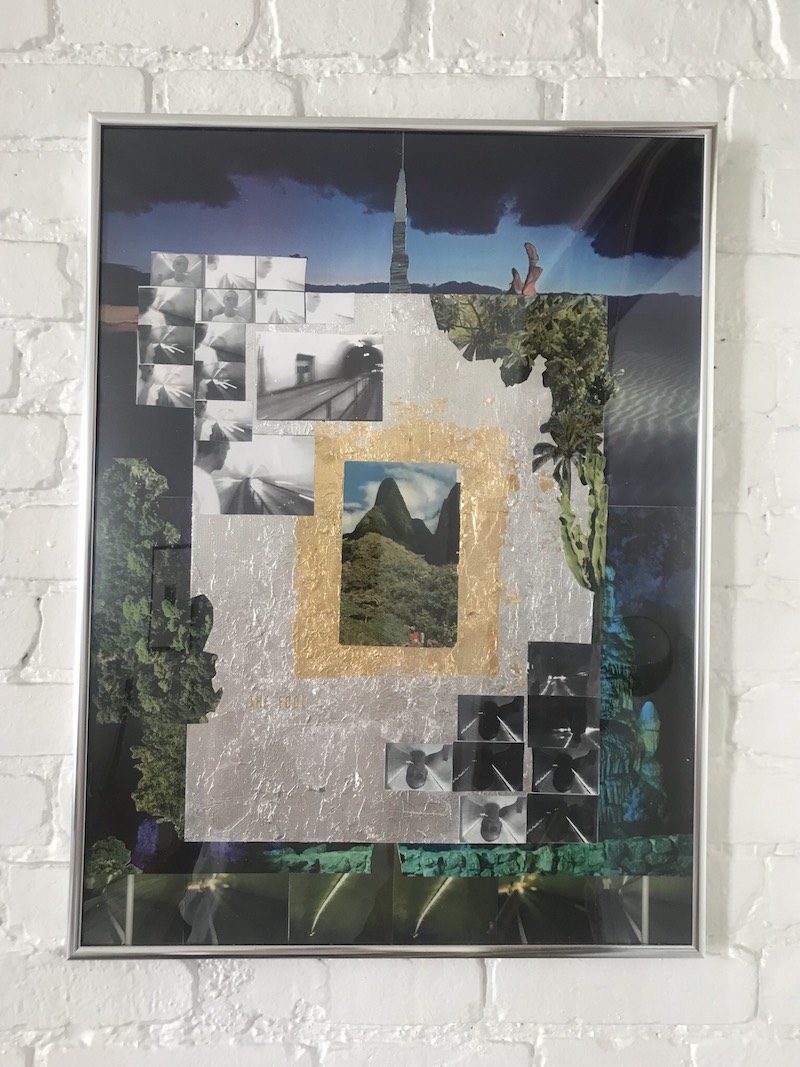 Exhibition Shot, The Fool
Exhibition Shot, The Fool
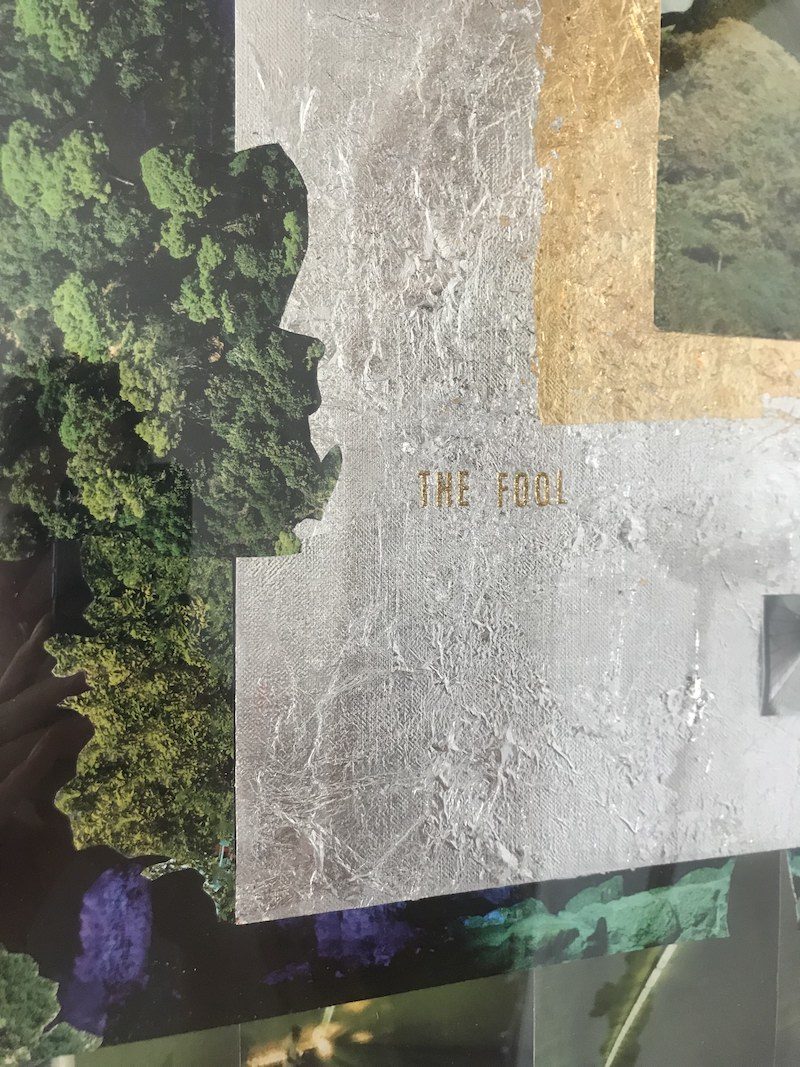 Exhibition Shot, The Fool
Exhibition Shot, The Fool
So for me it’s all about starting something new, going on a journey. I used photos of my brother walking down a tunnel, showing the idea of starting at one end and ending up on the other. The found postcard in the middle is Machu Picchu, the very definition of adventure and the unknown. And the background is just beautiful skies and jungle that I collage together. In my mind it’s a very positive and peaceful piece. Not so much for some others. I overheard 2 friends looking at it and they both came to the conclusion that it was about suicide, which was actually shocking to hear. They took the feet at the top right to mean someone killing themselves. So not my intention. I played with covering the feet up, but ultimately decided to keep them in because it fit the theme for me. Diving into something despite not knowing where you’ll end up. Even my mom reacted in a negative way. She at first thought the title ‘The Fool’ was about someone messing up or not being taken seriously. It was only after explaining the tarot archetype of The Fool, that she understood it. Only one person knew right away what I was referencing. But in the end isn’t that what art is trying to do? Start a conversation, a dialogue.
JW: That’s amazing. Although the current state of interconnectivity seems to gives everyone almost a set of universal references, there is always so much room for personal experience to overcome societal homogeny. Just now, when I thought of the idea of the Fool, I thought of a passage from T.S. Eliot poem, The Love Song of J Alfred Prufrock:
“No! I am not Prince Hamlet, nor was meant to be;
Am an attendant lord, one that will do
o swell a progress, start a scene or two,
Advise the prince, no doubt, an easy tool,
Deferential, glad to be of use,
Politics, cautious, and meticulous:
Full of high sentence, but a bit obtuse;
At times, indeed, almost ridiculous-
Almost, at times, the Fool.”
In this case, although it’s accepted by scholars that the use of fool is in some way Shakespearean (our society reference) Eliot’s exact intention in this context is still widely debated. Some people might think its a problem – the case of your fool, or Eliot’s fool – but I think the piece is doing its job. I think that’s what is beautiful about talking about and making art. Everyone is so conditioned today to see, read, and to automatically know. You’re wrong, I’m right. This is this, That’s that. It’s one note and exhausting be stuck in the constant polarity. I also find this conversation interesting in the context of the relationship/power that a title has with/over its associated piece.
Speaking of which, what other references/titles/associations find themselves in your work? What artists, movements, or time periods influence you? I am heavily influenced by the anti-poets in the 60s, Latin poetry, and Greek and Roman mythology to name a few… So there is no right answer –
MS: My influences are indie films from the 90’s and early 2000’s, coming of age stories and photographers like Nan Goldin and Ryan McGinley. I love an immersive installation in a museum that brings you into another world and makes you feel something. I love the ‘Beautiful Losers’ era of Ed Templeton, Barry McGee and Harmony Korine. I am endlessly inspired by fashion and culture magazines like I-D and So It Goes. The mix of image and text, the articles expanding your world, the different worlds colliding in one place. It doesn’t get better than that for me.
JW: Finally, what advice do you have to artists, some might say “The Fools”, who make the leap and move to NYC to pursue art?
MS: Take the leap! It’s a hard road but 100% worth it if you feel like art is your path, your calling. Forget about what society tells you about ‘success’ and find out what that looks like for you. It’s easy to get lost in NYC but give it time, you’ll find your community. Also, read Jerry Saltz article ‘33 Rules for Being an Artist.’ It’s the best life advice list out there.

To view more of Mary Snyder’s work please visit her website. Buy her zine here.